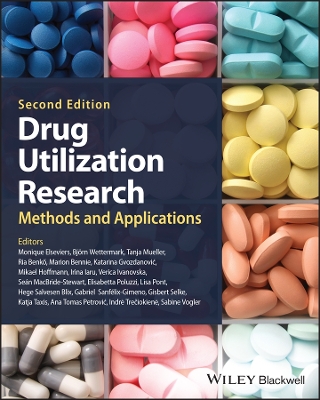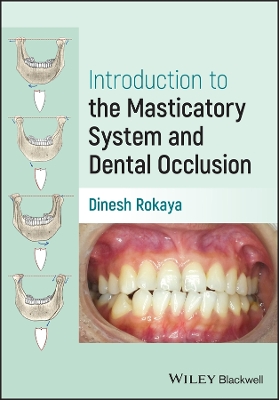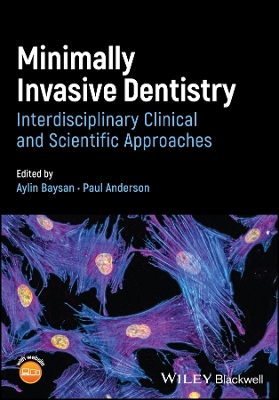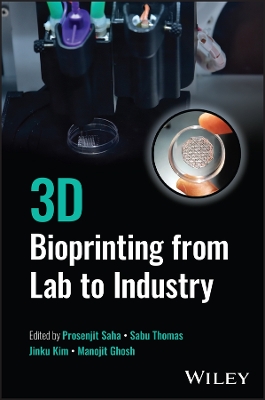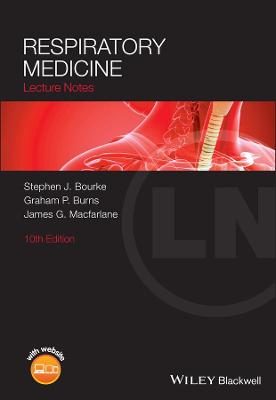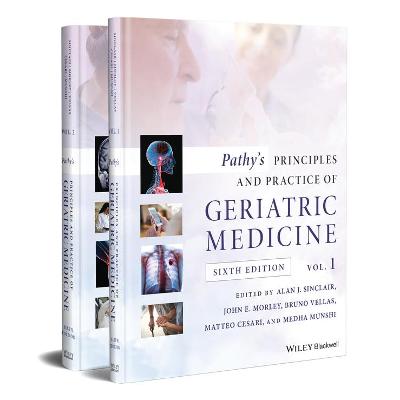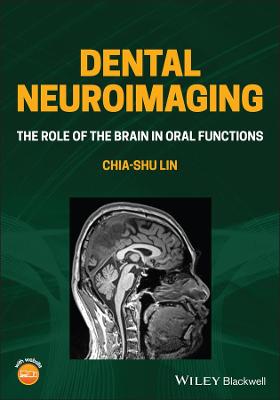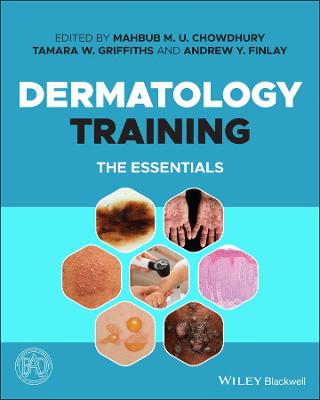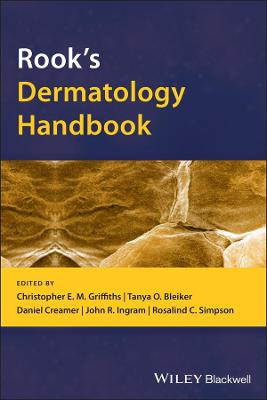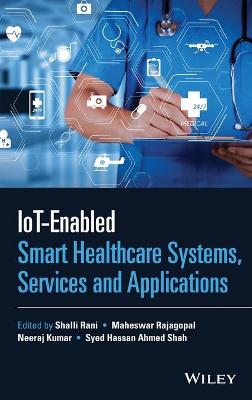Biosensors and Nanotechnology
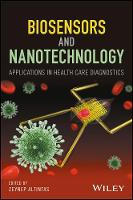 -15%
portes grátis
-15%
portes grátis
Biosensors and Nanotechnology
Applications in Health Care Diagnostics
Altintas, Zeynep
John Wiley & Sons Inc
02/2018
400
Dura
Inglês
9781119065012
15 a 20 dias
676
Preface xv
Acknowledgments xvii
Section 1 Introduction to Biosensors, Recognition Elements, Biomarkers, and Nanomaterials 1
1 General Introduction to Biosensors and Recognition Receptors 3
Frank Davis and Zeynep Altintas
1.1 Introduction to Biosensors 3
1.2 Enzyme- Based Biosensors 4
1.3 DNA- and RNA-Based Biosensors 5
1.4 Antibody-Based Biosensors 7
1.5 Aptasensors 8
1.6 Peptide-Based Biosensors 10
1.7 MIP-Based Biosensor 11
1.8 Conclusions 12
References 13
2 Biomarkers in Health Care 17
Adama Marie Sesay, Pirkko Tervo, and Elisa Tikkanen
2.1 Introduction 17
2.2 Biomarkers 18
2.2.1 Advantage and Utilization of Biomarkers 18
2.2.2 Ideal Characteristics of Biomarkers 19
2.3 Biological Samples and Biomarkers 20
2.4 Personalized Health and Point-of-Care Technology 22
2.5 Use of Biomarkers in Biosensing Technology 24
2.6 Biomarkers in Disease Diagnosis 26
2.7 Conclusions 29
References 30
3 The Use of Nanomaterials and Microfluidics in Medical Diagnostics 35
Jon Ashley and Yi Sun
3.1 Introduction 35
3.2 Nanomaterials in Medical Diagnostics (Bottom-Up Approach) 36
3.2.1 Carbon Nanomaterials 37
3.2.2 Metallic Nanoparticles 39
3.2.2.1 Quantum Dots 39
3.2.2.2 Magnetic Nanoparticles (Fe2O3, FeO, and Fe3O4) 41
3.2.2.3 Gold Nanoparticles 41
3.2.2.4 Silver Nanoparticles 42
3.2.2.5 Nanoshells 42
3.2.2.6 Nanocages 43
3.2.2.7 Nanowires 43
3.2.3 Polymer-Based Nanoparticles 44
3.3 Application of Microfluidic Devices in Clinical Diagnostics (Top-Down Approach) 45
3.3.1 Unique Features of Microfluidic Devices 45
3.3.2 Applications of Microfluidic Devices in Medical Diagnostics 46
3.3.2.1 Types of Microfluidic POC Devices 47
3.3.2.2 Benchtop Microfluidic Instruments 47
3.3.2.3 Small, Lightweight Microfluidic Devices 49
3.3.2.4 Simple Un-instrumented Microfluidic Systems 50
3.4 Integration of Microfluidics with Nanomaterials 52
3.5 Future Perspectives of Nanomaterial and Microfluidic-Based Diagnostics 53
References 54
Section 2 Biosensor Platforms for Disease Detection and Diagnostics 59
4 SPR-Based Biosensor Technologies in Disease Detection and Diagnostics 61
Zeynep Altintas and Wellington M. Fakanya
4.1 Introduction 61
4.2 Basic Theoretical Principles 63
4.3 SPR Applications in Disease Detection and Diagnostics 66
4.3.1 SPR Biosensors in Cancer Detection 66
4.3.2 SPR Sensors in Cardiac Disease Detection 68
4.3.3 SPR Sensors in Infectious Disease Detection 71
4.4 Conclusions 72
References 74
5 Piezoelectric-Based Biosensor Technologies in Disease Detection and Diagnostics 77
Zeynep Altintas and Noor Azlina Masdor
5.1 Introduction 77
5.2 QCM Biosensors 78
5.3 Disease Diagnosis Using QCM Biosensors 80
5.3.1 Cancer Detection Using QCM Biosensors 82
5.3.2 Cardiovascular System Disorder Detection Using Biosensors 85
5.3.3 Pathogenic Disease Detection Using QCM Biosensors 88
5.4 Conclusions 90
References 91
6 Electrochemical-Based Biosensor Technologies in Disease Detection and Diagnostics 95
Andrea Ravalli and Giovanna Marrazza
6.1 Introduction 95
6.2 Electrochemical Biosensors: Definitions, Principles, and Classifications 96
6.3 Biomarkers in Clinical Applications 102
6.3.1 Electrochemical Biosensors for Tumor Markers 102
6.3.2 Electrochemical Biosensors for Cardiac Markers 110
6.3.3 Electrochemical Biosensors for Autoimmune Disease 115
6.3.4 Electrochemical Biosensors for Autoimmune Infectious Disease 116
6.4 Conclusions 118
References 118
7 MEMS-Based Cell Counting Methods 125
Mustafa Kangul, Eren Aydin, Furkan Gokce, Ozge Zorlu, Ebru Ozgur, and Haluk Kulah
7.1 Introduction 125
7.2 MEMS-Based Cell Counting Methods 126
7.2.1 Optical Cell Counting Methods 126
7.2.1.1 Quantification of the Cells by Detecting Luminescence 127
7.2.1.2 Quantification of the Cells via High-Resolution Imaging Techniques 130
7.3 Electrical and Electrochemical Cell Counting Methods 131
7.3.1 Impedimetric Cell Quantification 133
7.3.2 Voltammetric and Amperometric Cell Quantification 135
7.4 Gravimetric Cell Counting Methods 136
7.4.1 Deflection-Based Cell Quantification 136
7.4.2 Resonant-Based Cell Quantification 138
7.4.2.1 Theory of the Resonant-Based Sensors 138
7.4.2.2 Actuation and Sensing Methods of Resonators in MEMS Applications 140
7.4.2.3 Resonator Structure Types Used for Cell Detection Applications 145
7.5 Conclusion and Comments 149
References 151
8 Lab-on-a-Chip Platforms for Disease Detection and Diagnosis 155
Ziya Isiksacan, Mustafa Tahsin Guler, Ali Kalantarifard, Mohammad Asghari, and Caglar Elbuken
8.1 Introduction 155
8.2 Continuous Flow Platforms 156
8.3 Paper-Based LOC Platforms 161
8.4 Droplet-Based LOC Platforms 166
8.5 Digital Microfluidic-Based LOC Platforms 169
8.6 CD-Based LOC Platforms 172
8.7 Wearable LOC Platforms 174
8.8 Conclusion and Outlook 176
References 177
Section 3 Nanomaterial's Applications in
Biosensors and Diagnostics 183
9 Applications of Quantum Dots in Biosensors and Diagnostics 185
Zeynep Altintas, Frank Davis, and Frieder W. Scheller
9.1 Introduction 185
9.2 Quantum Dots: Optical Properties, Synthesis, and Surface Chemistry 186
9.3 Biosensor Applications of QDs 187
9.4 Other Biological Applications of QDs 191
9.5 Water Solubility and Cytotoxicity 194
9.6 Conclusion 196
References 197
10 Applications of Molecularly Imprinted Nanostructures in Biosensors and Diagnostics 201
Deniz Aktas-Uygun, Murat Uygun, and Sinan Akgol
10.1 Introduction 201
10.2 Molecular Imprinted Polymers 202
10.3 Imprinting Approaches 204
10.4 Molecularly Imprinted Nanostructures 205
10.5 MIP Biosensors in Medical Diagnosis 207
10.6 Diagnostic Applications of MIP Nanostructures 210
10.7 Conclusions 212
References 213
11 Smart Nanomaterials: Applications in Biosensors and Diagnostics 219
Frank Davis, Flavio M. Shimizu, and Zeynep Altintas
11.1 Introduction 219
11.2 Metal Nanoparticles 221
11.3 Magnetic Nanoparticles 226
11.4 Carbon Nanotubes 231
11.5 Graphene 235
11.6 Nanostructured Metal Oxides 242
11.7 Nanostructured Hydrogels 247
11.8 Nanostructured Conducting Polymers 254
11.9 Conclusions and Future Trends 260
References 262
12 Applications of Magnetic Nanomaterials in Biosensors and Diagnostics 277
Zeynep Altintas
12.1 Introduction 277
12.2 MNP-Based Biosensors for Disease Detection 279
12.3 MNPs in Cancer Diagnosis and Therapy 284
12.4 Cellular Applications of MNPs in Biosensing, Imaging, and Therapy 289
12.5 Conclusions 290
References 291
13 Graphene Applications in Biosensors and Diagnostics 297
Adina Arvinte and Adama Marie Sesay
13.1 Introduction 297
13.2 Graphene and Biosensors 298
13.2.1 Structure 298
13.2.2 Preparation 299
13.2.3 Properties 301
13.2.4 Commercialization in the Field of Graphene Sensors 302
13.2.5 Latest Developments in Graphene-based Diagnosis 303
13.3 Medical Applications of Graphene 303
13.3.1 Electrochemical Graphene Biosensors for Medical Diagnostics 304
13.3.1.1 Glucose Detection 304
13.3.1.2 Cysteine Detection 307
13.3.1.3 Cholesterol Detection 309
13.3.1.4 Hydrogen Peroxide (H2O2) 310
13.3.1.5 Glycated Hemoglobin 312
13.3.1.6 Neurotransmitters 312
13.3.1.7 Amyloid-Beta Peptide 315
13.3.2 Electrochemical Graphene Aptasensors 316
13.3.2.1 Nucleic Acids 316
13.3.2.2 Cancer Cell 318
13.3.3 Optical Graphene Sensors for Medical Diagnostics 319
13.4 Conclusions 322
Acknowledgments 322
References 322
Section 4 Organ-Specific Health Care Applications for Disease Cases Using Biosensors 327
14 Optical Biosensors and Applications to Drug Discovery for Cancer Cases 329
Zeynep Altintas
14.1 Introduction 329
14.2 Biosensor Technology and Coupling Chemistries 332
14.3 Optical Biosensors for Drug Discovery 335
14.4 Computational Simulations and New Approaches for Drug-Receptor Interactions 341
14.5 Conclusions 343
References 344
15 Biosensors for Detection of Anticancer Drug-DNA Interactions 349
Arzum Erdem, Ece Eksin, and Ece Kesici
15.1 Introduction 349
15.2 Electrochemical Techniques 351
15.3 Optical Techniques 356
15.4 Electrochemical Impedance Spectroscopy Technique 358
15.5 QCM Technique 360
15.6 Conclusions 361
Acknowledgments 361
References 361
Index
Preface xv
Acknowledgments xvii
Section 1 Introduction to Biosensors, Recognition Elements, Biomarkers, and Nanomaterials 1
1 General Introduction to Biosensors and Recognition Receptors 3
Frank Davis and Zeynep Altintas
1.1 Introduction to Biosensors 3
1.2 Enzyme- Based Biosensors 4
1.3 DNA- and RNA-Based Biosensors 5
1.4 Antibody-Based Biosensors 7
1.5 Aptasensors 8
1.6 Peptide-Based Biosensors 10
1.7 MIP-Based Biosensor 11
1.8 Conclusions 12
References 13
2 Biomarkers in Health Care 17
Adama Marie Sesay, Pirkko Tervo, and Elisa Tikkanen
2.1 Introduction 17
2.2 Biomarkers 18
2.2.1 Advantage and Utilization of Biomarkers 18
2.2.2 Ideal Characteristics of Biomarkers 19
2.3 Biological Samples and Biomarkers 20
2.4 Personalized Health and Point-of-Care Technology 22
2.5 Use of Biomarkers in Biosensing Technology 24
2.6 Biomarkers in Disease Diagnosis 26
2.7 Conclusions 29
References 30
3 The Use of Nanomaterials and Microfluidics in Medical Diagnostics 35
Jon Ashley and Yi Sun
3.1 Introduction 35
3.2 Nanomaterials in Medical Diagnostics (Bottom-Up Approach) 36
3.2.1 Carbon Nanomaterials 37
3.2.2 Metallic Nanoparticles 39
3.2.2.1 Quantum Dots 39
3.2.2.2 Magnetic Nanoparticles (Fe2O3, FeO, and Fe3O4) 41
3.2.2.3 Gold Nanoparticles 41
3.2.2.4 Silver Nanoparticles 42
3.2.2.5 Nanoshells 42
3.2.2.6 Nanocages 43
3.2.2.7 Nanowires 43
3.2.3 Polymer-Based Nanoparticles 44
3.3 Application of Microfluidic Devices in Clinical Diagnostics (Top-Down Approach) 45
3.3.1 Unique Features of Microfluidic Devices 45
3.3.2 Applications of Microfluidic Devices in Medical Diagnostics 46
3.3.2.1 Types of Microfluidic POC Devices 47
3.3.2.2 Benchtop Microfluidic Instruments 47
3.3.2.3 Small, Lightweight Microfluidic Devices 49
3.3.2.4 Simple Un-instrumented Microfluidic Systems 50
3.4 Integration of Microfluidics with Nanomaterials 52
3.5 Future Perspectives of Nanomaterial and Microfluidic-Based Diagnostics 53
References 54
Section 2 Biosensor Platforms for Disease Detection and Diagnostics 59
4 SPR-Based Biosensor Technologies in Disease Detection and Diagnostics 61
Zeynep Altintas and Wellington M. Fakanya
4.1 Introduction 61
4.2 Basic Theoretical Principles 63
4.3 SPR Applications in Disease Detection and Diagnostics 66
4.3.1 SPR Biosensors in Cancer Detection 66
4.3.2 SPR Sensors in Cardiac Disease Detection 68
4.3.3 SPR Sensors in Infectious Disease Detection 71
4.4 Conclusions 72
References 74
5 Piezoelectric-Based Biosensor Technologies in Disease Detection and Diagnostics 77
Zeynep Altintas and Noor Azlina Masdor
5.1 Introduction 77
5.2 QCM Biosensors 78
5.3 Disease Diagnosis Using QCM Biosensors 80
5.3.1 Cancer Detection Using QCM Biosensors 82
5.3.2 Cardiovascular System Disorder Detection Using Biosensors 85
5.3.3 Pathogenic Disease Detection Using QCM Biosensors 88
5.4 Conclusions 90
References 91
6 Electrochemical-Based Biosensor Technologies in Disease Detection and Diagnostics 95
Andrea Ravalli and Giovanna Marrazza
6.1 Introduction 95
6.2 Electrochemical Biosensors: Definitions, Principles, and Classifications 96
6.3 Biomarkers in Clinical Applications 102
6.3.1 Electrochemical Biosensors for Tumor Markers 102
6.3.2 Electrochemical Biosensors for Cardiac Markers 110
6.3.3 Electrochemical Biosensors for Autoimmune Disease 115
6.3.4 Electrochemical Biosensors for Autoimmune Infectious Disease 116
6.4 Conclusions 118
References 118
7 MEMS-Based Cell Counting Methods 125
Mustafa Kangul, Eren Aydin, Furkan Gokce, Ozge Zorlu, Ebru Ozgur, and Haluk Kulah
7.1 Introduction 125
7.2 MEMS-Based Cell Counting Methods 126
7.2.1 Optical Cell Counting Methods 126
7.2.1.1 Quantification of the Cells by Detecting Luminescence 127
7.2.1.2 Quantification of the Cells via High-Resolution Imaging Techniques 130
7.3 Electrical and Electrochemical Cell Counting Methods 131
7.3.1 Impedimetric Cell Quantification 133
7.3.2 Voltammetric and Amperometric Cell Quantification 135
7.4 Gravimetric Cell Counting Methods 136
7.4.1 Deflection-Based Cell Quantification 136
7.4.2 Resonant-Based Cell Quantification 138
7.4.2.1 Theory of the Resonant-Based Sensors 138
7.4.2.2 Actuation and Sensing Methods of Resonators in MEMS Applications 140
7.4.2.3 Resonator Structure Types Used for Cell Detection Applications 145
7.5 Conclusion and Comments 149
References 151
8 Lab-on-a-Chip Platforms for Disease Detection and Diagnosis 155
Ziya Isiksacan, Mustafa Tahsin Guler, Ali Kalantarifard, Mohammad Asghari, and Caglar Elbuken
8.1 Introduction 155
8.2 Continuous Flow Platforms 156
8.3 Paper-Based LOC Platforms 161
8.4 Droplet-Based LOC Platforms 166
8.5 Digital Microfluidic-Based LOC Platforms 169
8.6 CD-Based LOC Platforms 172
8.7 Wearable LOC Platforms 174
8.8 Conclusion and Outlook 176
References 177
Section 3 Nanomaterial's Applications in
Biosensors and Diagnostics 183
9 Applications of Quantum Dots in Biosensors and Diagnostics 185
Zeynep Altintas, Frank Davis, and Frieder W. Scheller
9.1 Introduction 185
9.2 Quantum Dots: Optical Properties, Synthesis, and Surface Chemistry 186
9.3 Biosensor Applications of QDs 187
9.4 Other Biological Applications of QDs 191
9.5 Water Solubility and Cytotoxicity 194
9.6 Conclusion 196
References 197
10 Applications of Molecularly Imprinted Nanostructures in Biosensors and Diagnostics 201
Deniz Aktas-Uygun, Murat Uygun, and Sinan Akgol
10.1 Introduction 201
10.2 Molecular Imprinted Polymers 202
10.3 Imprinting Approaches 204
10.4 Molecularly Imprinted Nanostructures 205
10.5 MIP Biosensors in Medical Diagnosis 207
10.6 Diagnostic Applications of MIP Nanostructures 210
10.7 Conclusions 212
References 213
11 Smart Nanomaterials: Applications in Biosensors and Diagnostics 219
Frank Davis, Flavio M. Shimizu, and Zeynep Altintas
11.1 Introduction 219
11.2 Metal Nanoparticles 221
11.3 Magnetic Nanoparticles 226
11.4 Carbon Nanotubes 231
11.5 Graphene 235
11.6 Nanostructured Metal Oxides 242
11.7 Nanostructured Hydrogels 247
11.8 Nanostructured Conducting Polymers 254
11.9 Conclusions and Future Trends 260
References 262
12 Applications of Magnetic Nanomaterials in Biosensors and Diagnostics 277
Zeynep Altintas
12.1 Introduction 277
12.2 MNP-Based Biosensors for Disease Detection 279
12.3 MNPs in Cancer Diagnosis and Therapy 284
12.4 Cellular Applications of MNPs in Biosensing, Imaging, and Therapy 289
12.5 Conclusions 290
References 291
13 Graphene Applications in Biosensors and Diagnostics 297
Adina Arvinte and Adama Marie Sesay
13.1 Introduction 297
13.2 Graphene and Biosensors 298
13.2.1 Structure 298
13.2.2 Preparation 299
13.2.3 Properties 301
13.2.4 Commercialization in the Field of Graphene Sensors 302
13.2.5 Latest Developments in Graphene-based Diagnosis 303
13.3 Medical Applications of Graphene 303
13.3.1 Electrochemical Graphene Biosensors for Medical Diagnostics 304
13.3.1.1 Glucose Detection 304
13.3.1.2 Cysteine Detection 307
13.3.1.3 Cholesterol Detection 309
13.3.1.4 Hydrogen Peroxide (H2O2) 310
13.3.1.5 Glycated Hemoglobin 312
13.3.1.6 Neurotransmitters 312
13.3.1.7 Amyloid-Beta Peptide 315
13.3.2 Electrochemical Graphene Aptasensors 316
13.3.2.1 Nucleic Acids 316
13.3.2.2 Cancer Cell 318
13.3.3 Optical Graphene Sensors for Medical Diagnostics 319
13.4 Conclusions 322
Acknowledgments 322
References 322
Section 4 Organ-Specific Health Care Applications for Disease Cases Using Biosensors 327
14 Optical Biosensors and Applications to Drug Discovery for Cancer Cases 329
Zeynep Altintas
14.1 Introduction 329
14.2 Biosensor Technology and Coupling Chemistries 332
14.3 Optical Biosensors for Drug Discovery 335
14.4 Computational Simulations and New Approaches for Drug-Receptor Interactions 341
14.5 Conclusions 343
References 344
15 Biosensors for Detection of Anticancer Drug-DNA Interactions 349
Arzum Erdem, Ece Eksin, and Ece Kesici
15.1 Introduction 349
15.2 Electrochemical Techniques 351
15.3 Optical Techniques 356
15.4 Electrochemical Impedance Spectroscopy Technique 358
15.5 QCM Technique 360
15.6 Conclusions 361
Acknowledgments 361
References 361
Index

